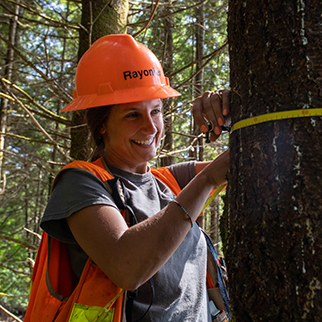Explore Green Jobs
Forester
Foresters play a key role in maintaining the health of the forest, benefitting the trees, wildlife living within the forest ecosystem, and the community.
Foresters use scientific information to develop strategies and deliver on their land management goals for the forest, including growing healthy trees, protecting water quality and vulnerable wildlife, and ensuring forest roads are well-maintained. They supervise contractors they hire to carry out various tasks in the forest.
Foresters work directly with loggers, soil experts, scientists, government officials, private landowners, and many other professionals. This job requires good communication and collaboration skills.
While "forester" is a general name for this profession, other names for this position may focus on a more specific aspect of the forest lifecycle, such as research forester, land management forester, resource land manager, and timber marketing forester. There are also different levels of forester positions, as explained below.



